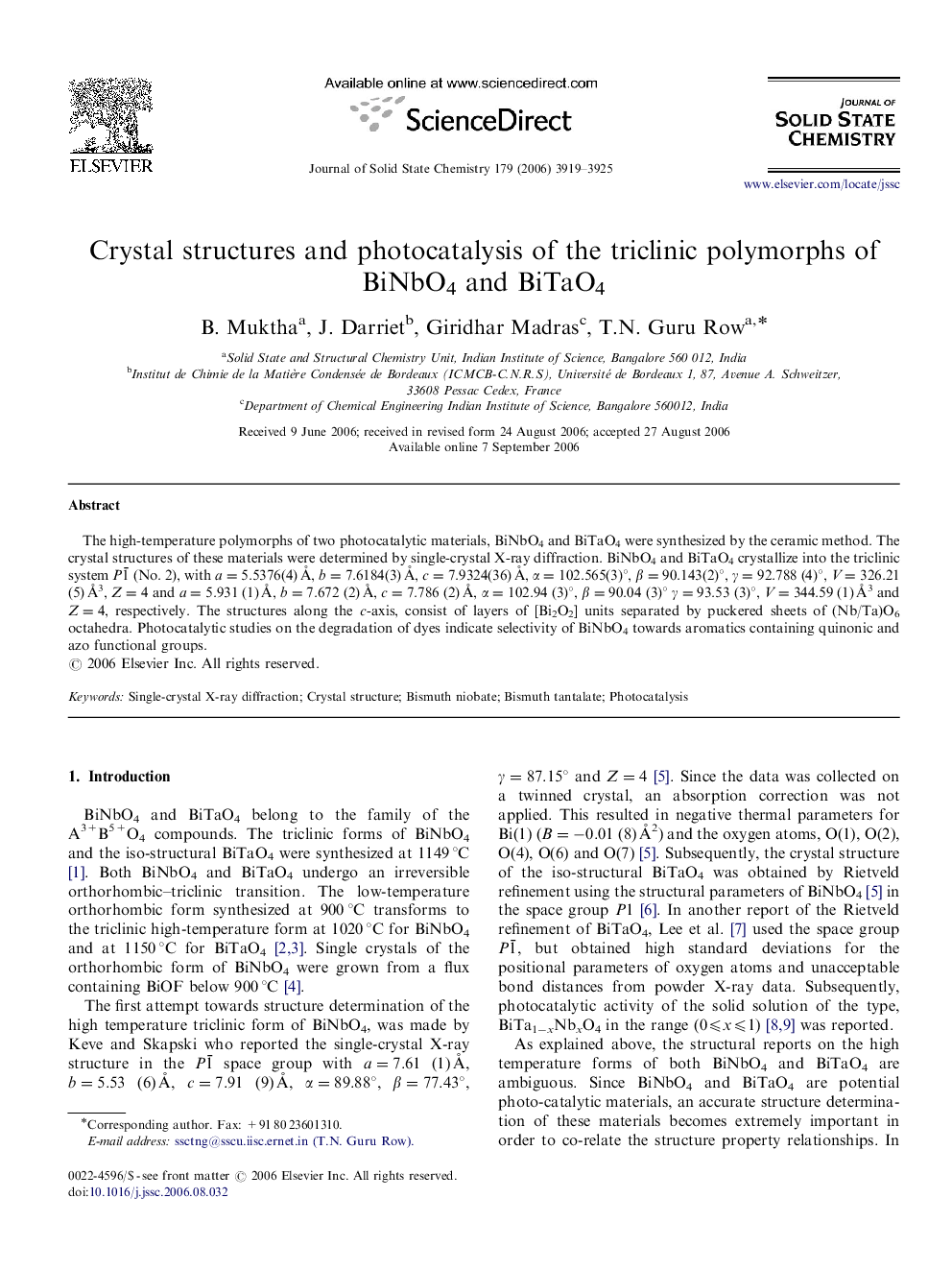| Article ID | Journal | Published Year | Pages | File Type |
|---|---|---|---|---|
| 1331779 | Journal of Solid State Chemistry | 2006 | 7 Pages |
The high-temperature polymorphs of two photocatalytic materials, BiNbO4 and BiTaO4 were synthesized by the ceramic method. The crystal structures of these materials were determined by single-crystal X-ray diffraction. BiNbO4 and BiTaO4 crystallize into the triclinic system P1¯ (No. 2), with a=5.5376(4) Å, b=7.6184(3) Å, c=7.9324(36) Å, α=102.565(3)°, β=90.143(2)°, γ=92.788 (4)°, V=326.21 (5) Å3, Z=4 and a=5.931 (1) Å, b=7.672 (2) Å, c=7.786 (2) Å, α=102.94 (3)°, β=90.04 (3)° γ=93.53 (3)°, V=344.59 (1) Å3 and Z=4, respectively. The structures along the c-axis, consist of layers of [Bi2O2] units separated by puckered sheets of (Nb/Ta)O6 octahedra. Photocatalytic studies on the degradation of dyes indicate selectivity of BiNbO4 towards aromatics containing quinonic and azo functional groups.
Graphical abstractCrystal structures of Bi(Nb/Ta)O4 along b-axis: triclinic form.Figure optionsDownload full-size imageDownload as PowerPoint slide
